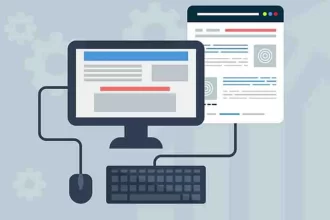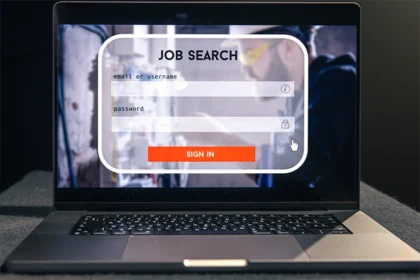What if your business could cut costs by up to 50% while getting more done with fewer errors? Nowadays, companies are under pressure to run leaner, do more with less, and still deliver top-notch service. That’s where enterprise robotic process automation steps in—a game-changer for automating repetitive tasks and bringing AI into the mix.
According to Deloitte, over half of businesses have already embraced RPA, with nearly one in five planning to join in the next two years. This guide breaks down how AI-driven RPA is changing the game, its benefits, and how you can use it.
What Is Enterprise RPA?
Enterprise RPA uses software bots to mimic human actions. It automates repetitive, time-consuming tasks across different departments. These bots can work with applications, handle data, create reports, and even send emails. They do this much faster than humans and without errors.
Compared to traditional automation, RPA is pretty easy to work with. Most of the tools have drag-and-drop features, meaning even nontechnical teams can handle it. That is the reason why RPA is an excellent choice for businesses looking to ease operations without large IT changes.
RPA is phenomenally versatile. It works for things like processing invoices in finance, onboarding employees in HR by automating paperwork, and handling customer inquiries by pulling data quickly.
The biggest advantage? It frees your team to focus on high-value work. Sales teams, for example, can be building client relationships while the CRM system is updated by the RPA.
How Enterprise RPA Fits into Your Business
Think of RPA as a persistent digital assistant. It doesn’t get tired, make mistakes, or take breaks. It works 24/7, keeping processes smooth and reliable.
RPA is scalable. Start small by automating a few tasks.Then expand its use as you see results.
It also seamlessly integrates with your existing tools-whether it is an older generation of systems or modern, cloud platforms-RPA perfectly fits in. Due to this fact, you may enjoy superior automation without costly upgrades of your IT infrastructure.
RPA fuels innovation and isn’t supposed to just save your organization’s time or money. Now, since RPA automates all those repetitive operations, more and more time and effort will be invested in creativeness and strategy.
Why Choose Enterprise RPA?
Here is what makes RPA a no-brainer for the businesses:
- Increased productivity: bots operate day and night, never on break.
- Less cost: Automation cuts the operational costs up to 50% deep.
- Zero error: RPA wipes out any sort of mistakes or compliance-related errors.
- Scalable: Increase your automation with growing business demands.
When AI Meets RPA
Enterprise AI solutions combined with RPA create a whole new level of automation. Traditional RPA does an excellent job of performing repetitive, rule-based tasks. Adding AI into the mix makes the bots smarter and more capable because now they can process unstructured data, understand natural language, and even make predictions based on historical patterns. This advanced blend of technology is called Intelligent Process Automation.
IPA gives companies so much more than the capability to automate basic tasks. A number of benefits are facilitated.
Full Workflow Automation
Bots are not about isolated steps; they can handle whole workflows, including the decision points involved. A loan might get approved on an IPA system by actually processing real-time customer data, documents, and an instant review of risk assessment.
Real-Time Insights
IPA-powered bots scan data as it moves through your system. They analyze patterns, flag anomalies, and generate actionable insights. In other words, organizations can make better and quicker decisions. For example, a retailer could use IPA to track inventory trends and restock items before an actual shortage occurs.
Personalized Customer Experience
AI-powered bots can now converse and interact with customers in a much more human-like manner, using natural language, responding intelligently, and offering solutions on an individual basis. Example: a chatbot independently resolves complex customer queries about products or recommends items pertaining to the purchase history of the customer.
Businesses solve key problems previously requiring substantial human input: from messy data processing, such as scanned documents, to making predictions about the future; IPA opens innovation and efficiency doors. Such a powerful pairing is now disrupting industries that help companies compete and create exceptional results with scale.
Real-Life Examples of AI-Driven Automation
AI-driven automation is already making waves across industries. It helps enterprises save time, cut costs, and deliver higher ROI. These are the real-world use cases of how it is applied:
Finance: Banks and financial institutions are rapidly automating invoice handling, fraud detection, and reporting. SS&C GlobeOp, one of the largest fund administrators, implemented RPA for syndicated loan settlements. It resulted in a 57% reduction in the average handling time for loan settlements, while document processing attained 100% accuracy.
Banking: HDFC Bank adopted RPA for the loan application process automation. It brought down the time taken to process a single loan application from 40 minutes to 20 minutes with the aim of doubling productivity.
Customer service: Sharp Corporation automated the processes involved in client communications and support. This cut the average handle time of customer interactions from 3 minutes down to 1 minute – a 63% reduction – and greatly improved the overall customer and employee experience.
Logistics: The global telecommunications company, Telco, adopted RPA for processing customer requests for speed and efficiency. The automation yielded a 67% quicker response time for complex customer requests, cleared call backlogs, and reduced overall staff burnout.
Non-banking financial companies: A large NBFC in India automated their loan disbursal using RPA and IDP. This automation led to a 75% reduction in the turnaround time for loan processing.
How to Get Started with Enterprise RPA
Thinking about adopting RPA? Use this simple roadmap to get going:
- Check your processes: look for tasks that are repetitive, rule-based, and time-consuming. These are perfect candidates for automation. Think data entry, invoice processing, or customer support queries.
- Get the tech ready: make sure your IT infrastructure is ready for RPA. This doesn’t mean a massive overhaul—most RPA tools integrate with existing systems. Just make sure your network and security protocols are up to the task.
- Rally the troops: get everyone on the same page. Leadership needs to champion the initiative, and employees should understand how bots will support them, not replace them. A clear vision helps avoid resistance and fosters excitement.
Pro Tips for Success
Begin with a pilot project. Automate one or two processes, measure the results, and use what you learn to expand. This lets you test the waters without diving in headfirst.
People are key to RPA success. Train your staff to work alongside bots. This could mean teaching them how to manage automated workflows or analyze the data bots generate.
Don’t go it alone. Work with an experienced RPA vendor or consultant. They’ll guide you through setup, customization, and troubleshooting, making the process much smoother.
Measure the Results
Don’t just set it and forget it. Keep an eye on key metrics like:
- Time saved on tasks.
- Costs reduced across departments.
- Errors eliminated through automation.
Regular reviews help you understand what’s working and where to improve. Fine-tuning ensures you get the most out of your investment.
In a Nutshell
AI and RPA are game-changers. They can help your business work smarter, not harder. By embracing these tools, you’ll stay competitive, delight your customers, and build a foundation for growth. The future is automated – make sure your enterprise is too!










